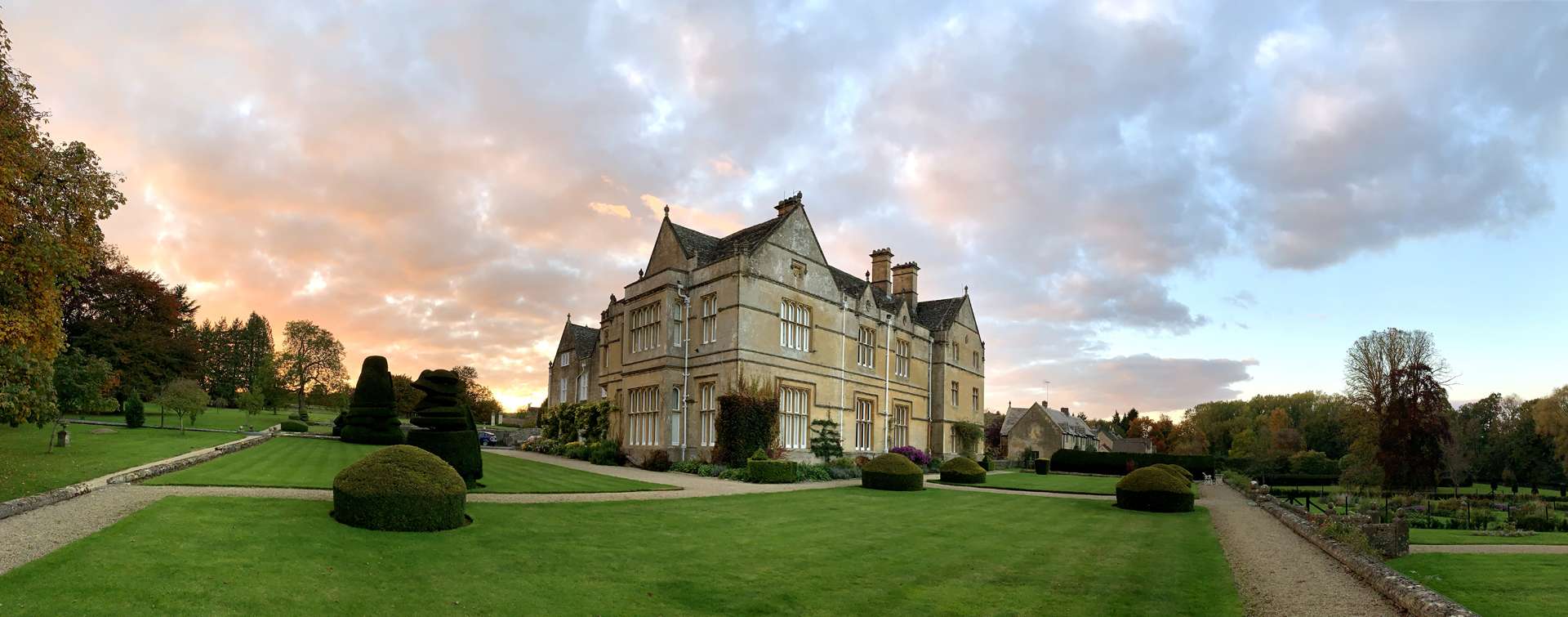
Brockhampton Park’s Literary Connection
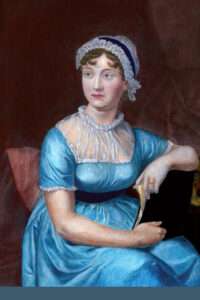
Portrait of Jane Austen, 1810
Tenuous though it may be, one of Brockhampton Park’s previous occupants had an indirect connection to Jane Austen, the famed female novelist of the early 1800s. Elizabeth Craven (1687–1777), widow of Charles Craven, one-time governor of the Province of South Carolina in the American colonies and tenant of Brockhampton Park, most likely retired to the house for a time after her husband’s death in 1754. Born Elizabeth Staples, she and her husband had probably hoped that the South Carolina interlude would bring them riches, but apparently it did not. As a Craven, although only by marriage, she was part of a widespread, prolific, rich and powerful family. If a later account of her character is correct, she was probably not about to while away her days in Gloucestershire, when other potential advantages were open to her. Passing the tenancy of Brockhampton to her son, she moved to a Craven house in Kintbury, Berkshire, the village where she had married Charles in 1719.
Within a few months of moving she had somehow persuaded a neighbour, Mr Jemmett Raymond of Barton Court, to make her his heir, and, shortly afterwards, they married. It was Jemmett’s second marriage and Elizabeth was now the mistress of Barton Court. In another shrewd move, she persuaded her son, Reverend John Craven, to marry Raymond’s half-sister, also an Elizabeth, who owned an estate of her own. It was he who we know held the tenancy
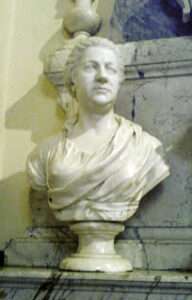
Elizabeth Craven
of Brockhampton Park in 1803.1An opulent tomb at the east end of St Mary’s church, Kintbury, commemorates both Jemmett and Elizabeth with life-sized marble busts. If the busts are true-to-life portraits, Elizabeth was a strong-faced woman, who could easily be seen as domineering and as lacking in warmth as the marble they are made from.
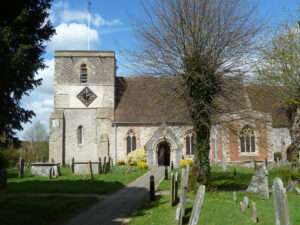
St Mary’s Church, Kintbury.
While studying at Oxford in the mid-1700s, Jane Austen’s father, George, had formed a firm friendship with a Thomas Fowle, son of the rector2 of Kintbury St Mary’s. George married and went on to become the rector of Steventon, not too far from Kintbury, and began schooling young men preparing for university. By then, Thomas Fowle had taken over from his father as rector of Kintbury. He had married Jane Craven, one of Elizabeth Craven’s daughters, and they had four sons, Fulwar Craven,3 Tom, William and Charles, whom he sent for education at the rectory in Steventon. There the boys got to know George Austen’s large family, including Jane and her sister Cassandra. The two families became very close and often exchanged visits. Cassandra became engaged to Tom Fowle, probably around 1792, but, being impoverished, they were forced to put off marrying. Tom was appointed domestic chaplain to his father’s kinsman, Lord Craven, in 1795. It was while accompanying him on a campaign in the West Indies that he died of yellow fever at San Domingo in 1797. Cassandra never married.
Meanwhile, Jane Craven’s twin, Martha, had also married a cleric, named Noyes Lloyd, and given birth to three daughters. Eliza, the eldest, married Fulwar Craven Fowle, who in his turn became rector of Kintbury. This is how Elizabeth Craven came to be the grandmother of both bride and groom in the marriage (see the relationship diagram below). The second daughter, Martha, became one of Jane Austen’s most trusted, lifelong friends, second only to her sister, Cassandra. Much later, after Jane’s death, Martha married Jane’s brother, Francis, who, by then, had achieved a knighthood and was Admiral of the Fleet of the British navy. The third daughter, Mary, married another Austen brother, James, and it was her daughter, Caroline, Jane’s niece, who related the family stories about Elizabeth Craven’s cruelty to her daughters in her book, Reminiscences: ‘the cruel Mrs Craven…a most courteous and fascinating woman in society’, but fiercely acquisitive and possessed of a ‘stern, tyranical temper’ [sic].
A writer takes her settings, characterizations and plots from many sources and melds them together. From Elizabeth’s granddaughters, Jane Austen would have heard accounts of Elizabeth beating and starving her daughters, and treating them as servants, and it is said she based the protagonist of her early novella, Lady Susan Vernon, on Elizabeth Craven. There is also a reference to a Barton Park in her book Sense & Sensibility whose name echoes that of Barton Court, where Elizabeth and Jemmett Raymond resided.
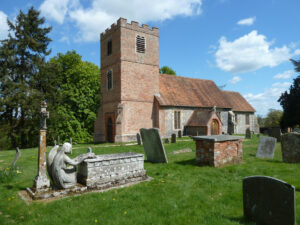
Hamstead Marshall parish church.
Yet this is not the only link between Brockhampton Park and Kintbury. The father of the above Thomas Fowle, also named Thomas, preceded his son as rector of St Mary’s, Kintbury, and he was also the cleric responsible for another flock at Hamstead Marshall, a nearby village. Living in that small village was a family of working-class brickmakers named Cuin. On December 5, 1755, the Reverend Thomas Fowle senior solemnized the marriage of William Martin Cuin, to his bride, Elizabeth Mason, in St Mary’s church, Kintbury. Subsequently, he, or his son, almost certainly officiated at the christenings of their several children, which are recorded at Hamstead Marshall parish church. William Cuin was the five-times great-grandfather of this article’s author, who has been an owner at Brockhampton Park since 2007.
David Cuin
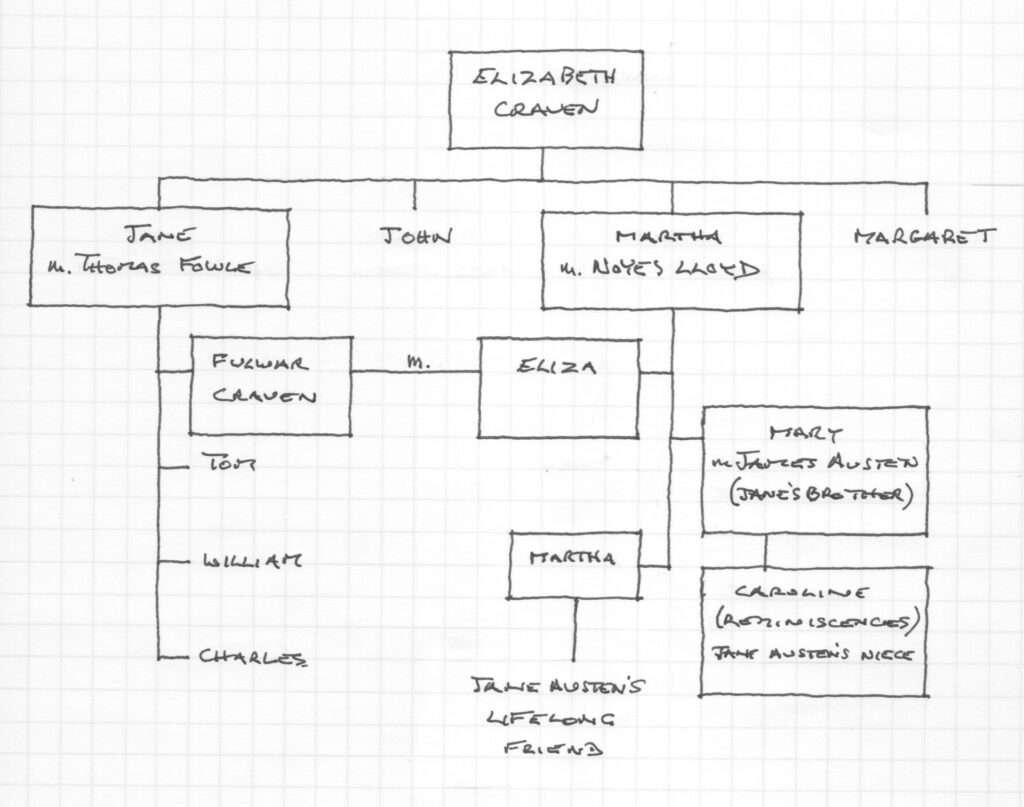
Relationship Tree.
Notes:
1. See ‘A History of Brockhampton Park’ on this page of the website.
2. Nowadays, the difference between the rector of a parish and a vicar is largely technical. Though both are responsible for a parish, a rector has the right to receive tithes, whereas a vicar does not.
3. These are both Christian names. Thomas Fowle owed his position at St Mary’s, Kintbury, to his cousin Lord Craven. It was not uncommon for someone in such a position to name a child after a benefactor in appreciation or as a compliment.
